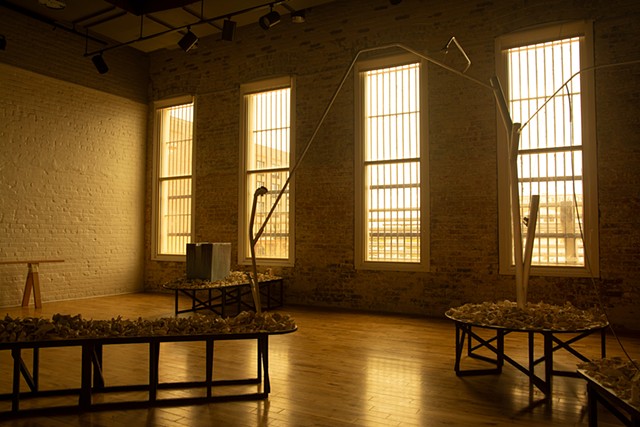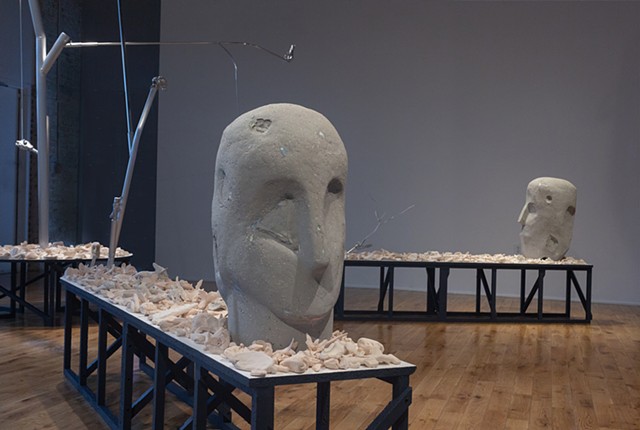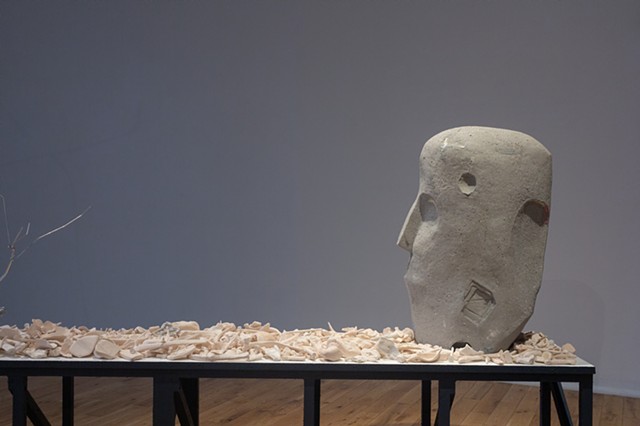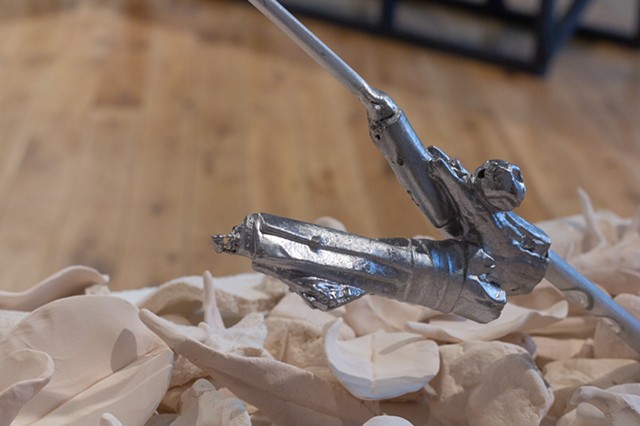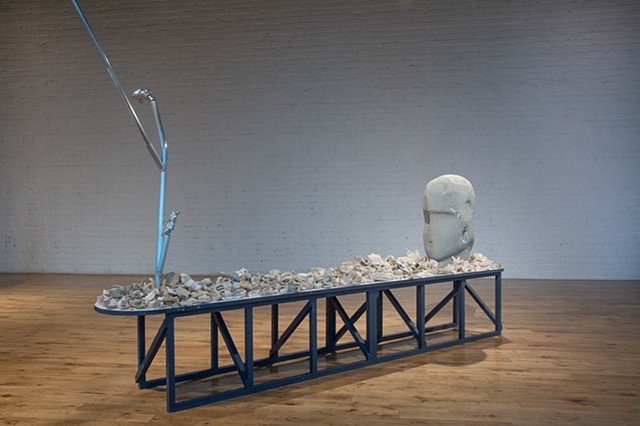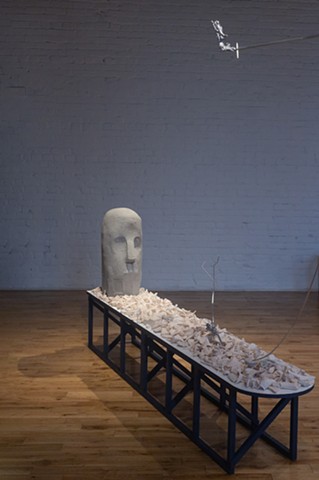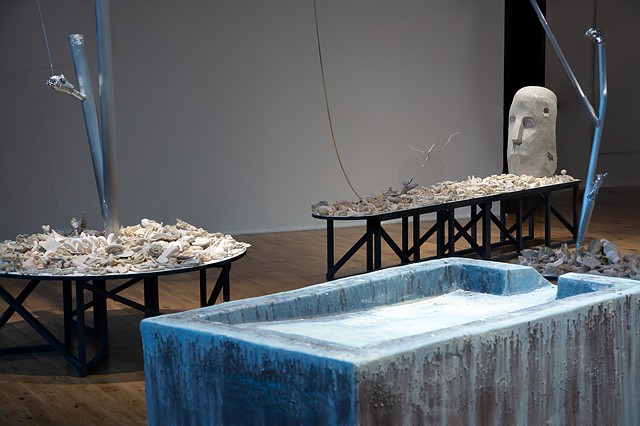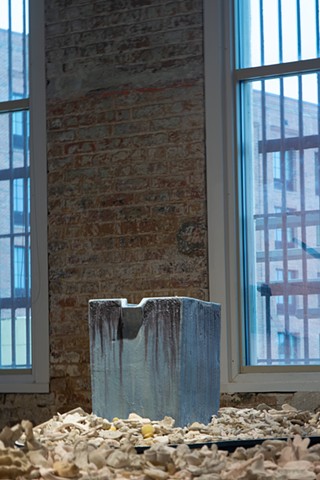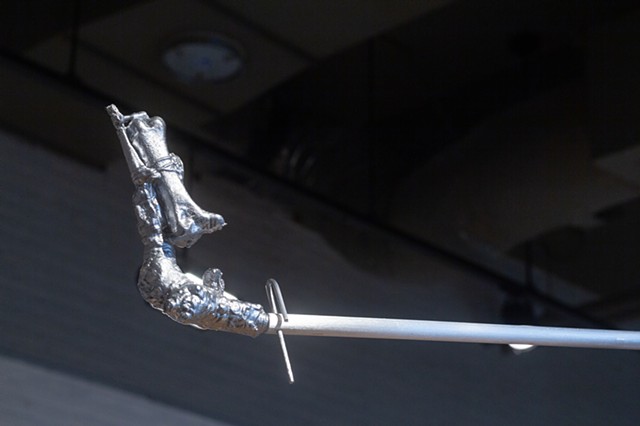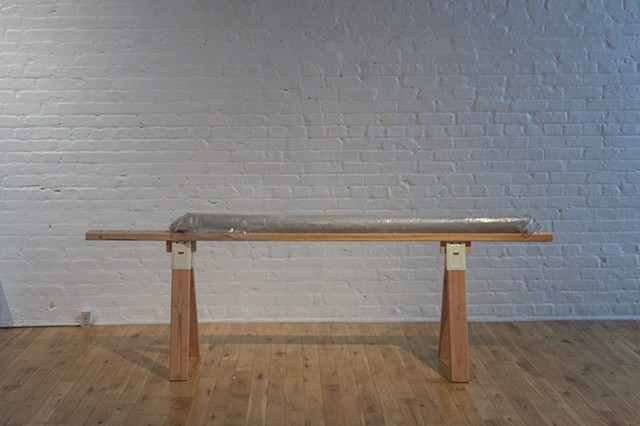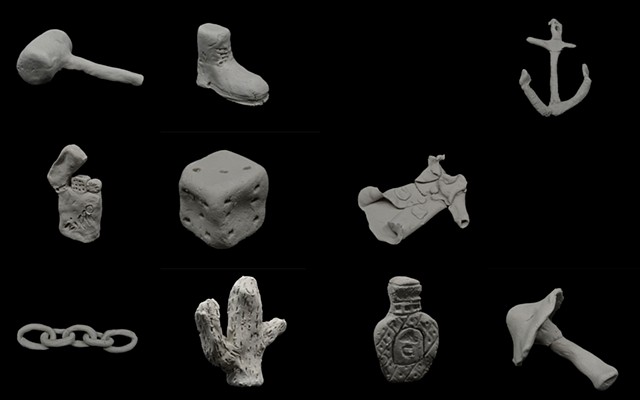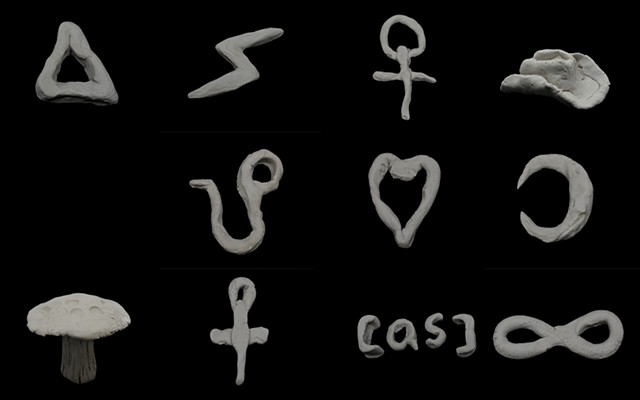Stone Fruit
Stone Fruit is a site for contemplation.
It is an orchard, a cemetery, a well, a beach.
The large ceramic forms of Stone Fruit were made in reference to monoliths found at the Munlochy Clootie Well and Boa Island Janus Figure. The Well is a place of healing that holds and distributes water from a single source. The Janus is a two-face looking to past and future, life and death, masculine and feminine. The fossils held in the sculpted monoliths are poetic symbols of preserving knowledge, tasting fruit, holding power, and contemplating the future.
Acting as a site of planting, pruning, cloning, and harvesting, the aluminum sculpture is reminiscent of a fruit tree and an arbor. The use of aluminum places this symbol of nature in context with shipping, technology, and industry. Each casting is a compositional graft alluding to the orchard as a human grown record of knowledge, sustenance, and indulgence.
“Stone Fruit” situates the arbor, the Janus, and the well in a common landscape connected through the pebble beach or scree. The tumbled mass of the scree is a response to cultural sites of accumulation where humans distribute emotion, memory, and ideas through material. The Caladesi Island shell tree, Seattle’s gum wall, clootie wells, penny trees, and the basins of fountains are examples of such spaces.
These sites are ongoing community sculptures, locations where visitors leave thoughts as material in symbolic gesture. Stone Fruit invites you to participate with the installation by sculpting a small trace in soft clay to leave behind as part of the work. All contributions will be fired at the close of the exhibition and permanently added to the work.
Stone Fruit was exhibited at the Pensacola Museum of Art as part of A Dead Reckoning: Navigating Contemporary Ceramics
